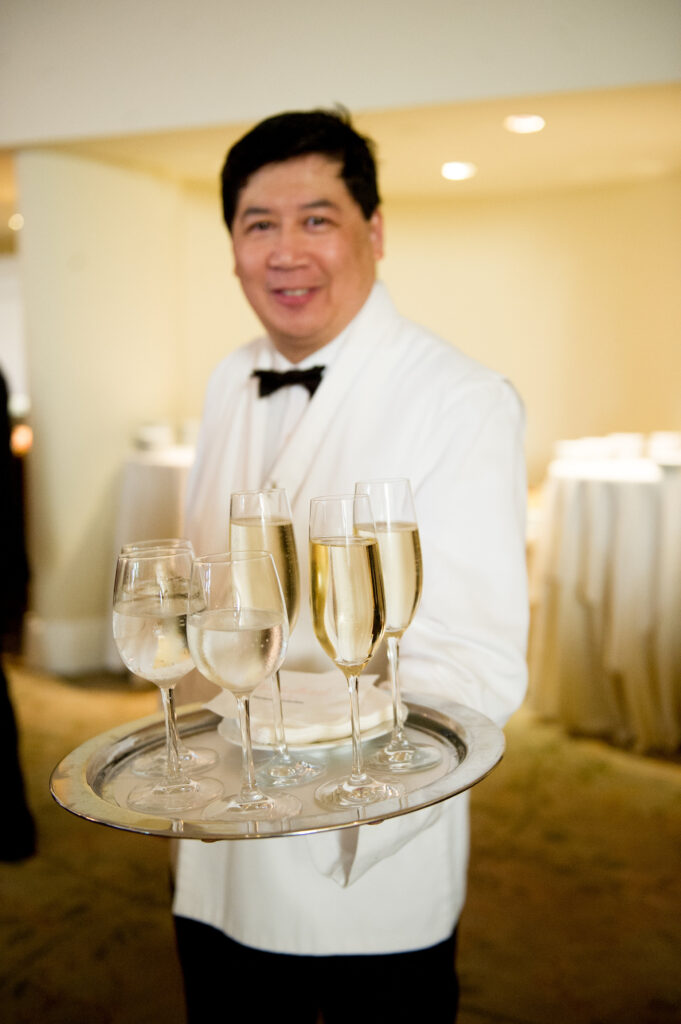When you’re managing an event, you need to be everywhere at once. Impossible, of course; that’s why you have staffers! But leaving them hanging without direction is ineffective, inefficient, and may cause your event to run late. A huge key to staff management for event planners on the day of an event is the stand-up. By holding stand-ups throughout the day, you will ensure your staff has the information and direction you need. These short pow-wows prevent you from having to constantly calling out commands at every moment of the event, or throwing your hands up in frustration and doing everything yourself, leaving you stretched too thin and prone to unforced errors.
A “Stand-up” is literally just that: standing up in a circle with your staff and giving them an overview of the event and what’s expected of them. Many teams across industries have stand-ups (though these days, they may be virtual)—I.T. and tech, food service, sales teams, and so forth. Most commonly, in my experience in hospitality, they are a daily routine at hotels. Each department ‘stands up’ and goes over whatever is pertinent to their department: sales figures, the latest news, VIP guests arriving that day, events taking place at the property, and/or scheduling and critical tasks to tackle that very day.
How and when to hold stand-ups for effective staff management for event planners
- Have a stand-up after all staff have arrived. You’ll have already (hopefully) given a tour of the property and review of the timeline as each staffer arrives, but once they’ve all shown up, bring them in for a 5-10 minute overview of the event, and MOST IMPORTANTLY: review their roles and key times of the day that they must be aware of. For example, at a wedding, a staffer handling decor needs to know when the ceremony, cocktail, and reception areas MUST be ready for photography. Also key is letting them know how best to reach out to you (cell? walkie?); who the VIPs are (mother of the bride; president of the company if it’s a corporate event, etc.) and emergency info, such as the name of the nearest hospital and where the first aid kit is located.
- Have a stand-up shortly before the event starts. Typically, right before your staffers change into their professional wardrobe and after most/all of the set up is complete, except for last minute tasks that can’t be done until the last minute (such as taking down stantions or setting out a gift box when the gift host arrives). Pull the staff together, alert them of anything new you’ve learned that may adjust or change the timeline or flow of the event, and re-assign or refresh them of their roles. Because, once the event starts, their roles may adjust, right? The set up person may now be the vendor coordinator; the bridal attendant might now transition to helping guests find their seats, etc. Remind your event staff to keep their phones charged, perhaps perform a walkie check, and ensure they all have their wearable kits as needed (sewing kit, scissors, etc).

Don’t forget: Have stand-ups with vendors, too.
This is so important! I’ve seen far too often other critical players in the execution of events left hanging, with no one on the event staff communicating with them. At all. Bad move!
Before the ceremony or guest arrival or beginning of the event, circle back with every single vendor: caterer, hotel staff, AV, DJ, etc. Alert them if the start time has changed or any adjustments. In a sense, these are really mini stand-ups —no need to corral all the vendors in one place, if it’s a smaller event. If it’s a bigger event, try to get them all in one circle so you can make it efficient. But for weddings, typically you want to approach them yourself, one by one; you really only need to speak with the hotel manager/banquet captain, DJ or band manager, and possibly decor pros if there’s a reset of flowers/rentals. But, be sure to loop in everyone who needs to be in the know.
Then, circle back again as you shift gears—whether it’s launching an AV presentation, breaking for attendee meals, or, at a wedding, after the ceremony starts, so you can connect with them about any adjustments to the timeline in case the ceremony starts late.
Once you’ve added stand-ups to your event management protocol, you’ll find your events run more smoothly, with fewer interruptions to your flow and more support and backup for you. By being in the loop, your staff will be able to make small decisions more easily and be more proactive in taking charge of various aspects of the event.

